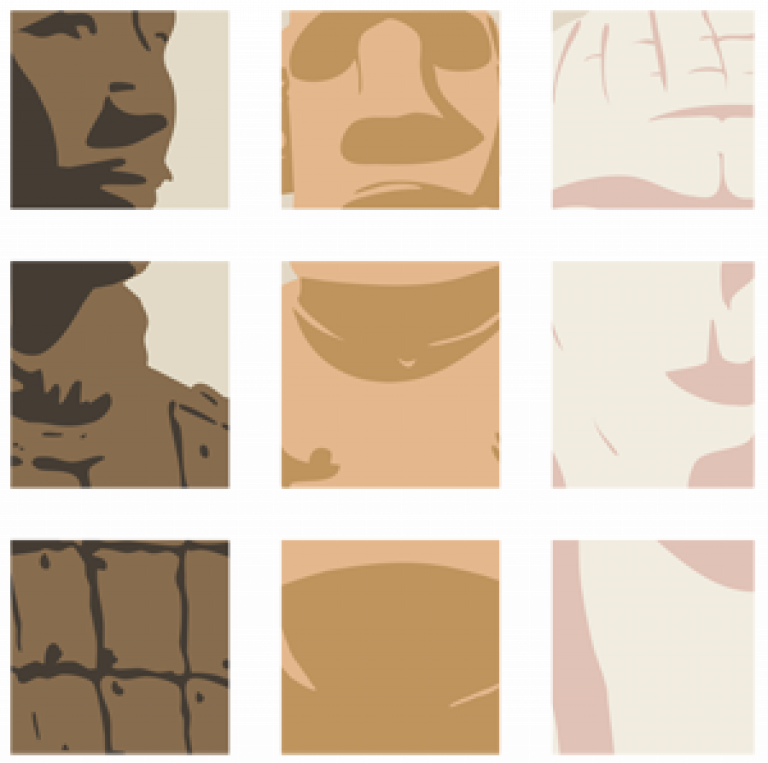Crowd-sourcing Britain's Bronze Age: call for public to help catalogue and model prehistoric artefacts
16 April 2014
A new joint project by the British Museum and the UCL Institute of Archaeology is seeking online contributions from members of the public to enhance a major British Bronze Age archive and artefact collection.

The project team, co-led by
Professor Andrew Bevan (UCL Institute of Archaeology) and Daniel Pett (British
Museum), have photographed hoards of Bronze Age (ca. 2500 BC - 800 BC)
metal objects and scanned thousands of paper records
of further metal artefacts from British prehistory.
They are now asking
for public assistance in modelling, transcribing and locating these
archaeological finds via a dedicated "crowd-sourcing" website: http://crowdsourced.micropasts.org/ The website is powered
by an open source Pybossa citizen science framework.
Neil Wilkin, the curator of
Bronze Age collections at the British Museum, is seeking online help
from anyone interested in British prehistoric archaeology in researching and enriching our knowledge of the first national
catalogue of Bronze Age objects in the UK.
This record contains over
30,000 Bronze Age tools and weapons that were discovered during the 19th
and 20th centuries, and complements the current Portable Antiquities
Scheme (PAS) database of metal object finds.
The catalogue contains index
cards detailing object find spots and types, alongside detail line
drawings and a wide range of further information about the object's
context of discovery. The catalogue itself also has
a long and special history. It was a major archaeological initiative
first founded in 1913 and then moved to the British Museum in the 1920s.
For over 70 years, it represented the highest standards of Bronze Age
artefact studies.
"This information has long
been known to be an extremely important untapped resource," says curator
Wilkin, "Metal finds are not only crucial forms of evidence for dating
Britain's prehistoric past, but also tell us
a great deal about prehistoric society and economy. Once we have
digitised the thousands of objects in this catalogue, they can be
incorporated into the Portable Antiquities Scheme (PAS) website.
The result
will be the largest national database of prehistoric metal finds
anywhere in the world and a near-comprehensive view of what we currently
know about such finds in the UK. This will allow rethinking of almost
everything we currently know about the use of metal
in Bronze Age Britain, giving us a far more comprehensive view of our
prehistoric past."
The UCL Institute of Archaeology is really well-placed to foster a crowd-sourcing project of this kind, because we have such a wealth of expertise under one roof, spanning computer-based methods, artefact studies, public engagement in archaeology, archival science and British prehistory to name just a few.
Professor Andrew Bevan (UCL Institute of Archaeology)
A further goal is to create a
large series of research-quality 3D models of some of the fantastic
Bronze Age metal objects held in the British Museum's collections. Neil
and the MicroPasts team will be developing high
quality 3D models of a selection of bronze axes recorded in the card
catalogue, via the same crowd-sourcing platform. Today, these models can
easily be constructed from ordinary digital photographs, but an
important step in creating a really good model is to
identify the outline of the object in each photograph.
The team are
asking for anyone with an interest in these prehistoric artefacts or
modern digital methods to help via the crowd-sourcing platform. The
resulting 3D models will not only enable them to better
visualise the artefacts, but will also encourage new forms of
scholarship. By exposing, for example, tiny differences in object
style, they will gain new insights into how, where, and when these
objects were made.
All the project's data will be made publicly available under an open licence so that anyone can use it: whether to share, discuss and protect local finds via the enhanced catalogue, to conduct their own archaeological research, or to make use of 3D models in computer-based environments and games.
Professor Bevan added: "The UCL Institute of Archaeology is really well-placed to
foster a crowd-sourcing project of this kind, because we have such a wealth of
expertise under one roof, spanning computer-based methods, artefact studies,
public engagement in archaeology, archival science and British prehistory to
name just a few.
"One of the things that makes MicroPasts such an exciting project is the fact that we can potentially take it in so many different future directions. We plan to create yet more crowd-sourcing applications for the platform, following both our own personal research interests and those of other university or museum researchers worldwide, but also the ideas of the contributors we attract online."
UCL researchers, Chiara Bonacchi and Adi Keinan-Schoonbaert, add
that these two crowd-sourcing applications will be followed by further
public collaborations both in the UK and
elsewhere, and they hope that this project will start a different kind
of discussion about how we research our collective past.
The MicroPasts initiative has been funded by the UK Arts and Humanities Research Council, under the Capital Funding Call for Digital Transformations in Community Research Co-Production in the Arts and Humanities
Links
- MicroPasts
- Professor Andrew Bevan's academic profile on Iris
- UCL Institute of Archaeology
- British Museum
- Portable Antiquities Scheme
- Arts and Humanities Research Council
Image
- (Top right) The Micropasts logo (Homepage) Early Bronze Age Axe hoard discovered in the late 19th century from the Folkton barrow in North Yorkshire (Copyright: Trustees of the British Museum)
 Close
Close

